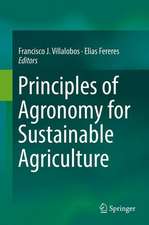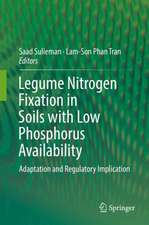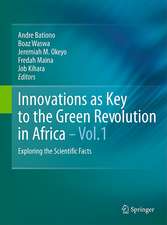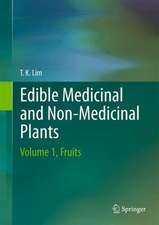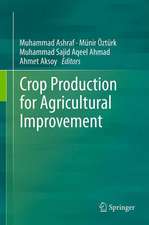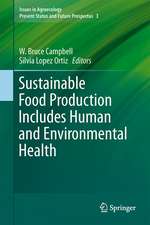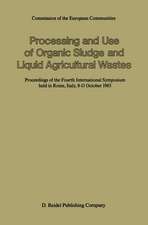Crop Yield Response to Deficit Irrigation: Report of an FAO/IAEA Co-ordinated Research Program by Using Nuclear Techniques: Developments in Plant and Soil Sciences, cartea 84
Editat de C. Kirda, P. Moutonnet, C. Hera, D.R. Nielsenen Limba Engleză Hardback – 30 noi 1998
| Toate formatele și edițiile | Preț | Express |
|---|---|---|
| Paperback (1) | 943.57 lei 43-57 zile | |
| SPRINGER NETHERLANDS – 14 oct 2012 | 943.57 lei 43-57 zile | |
| Hardback (1) | 949.55 lei 43-57 zile | |
| SPRINGER NETHERLANDS – 30 noi 1998 | 949.55 lei 43-57 zile |
Din seria Developments in Plant and Soil Sciences
- 18%
 Preț: 1225.94 lei
Preț: 1225.94 lei -
 Preț: 391.79 lei
Preț: 391.79 lei - 18%
 Preț: 1225.94 lei
Preț: 1225.94 lei - 18%
 Preț: 1228.29 lei
Preț: 1228.29 lei - 18%
 Preț: 1246.95 lei
Preț: 1246.95 lei - 24%
 Preț: 1073.18 lei
Preț: 1073.18 lei - 18%
 Preț: 970.70 lei
Preț: 970.70 lei - 24%
 Preț: 1073.76 lei
Preț: 1073.76 lei -
 Preț: 396.24 lei
Preț: 396.24 lei -
 Preț: 386.81 lei
Preț: 386.81 lei - 15%
 Preț: 699.93 lei
Preț: 699.93 lei -
 Preț: 384.86 lei
Preț: 384.86 lei - 18%
 Preț: 1221.69 lei
Preț: 1221.69 lei - 18%
 Preț: 1233.06 lei
Preț: 1233.06 lei -
 Preț: 399.12 lei
Preț: 399.12 lei - 18%
 Preț: 1227.67 lei
Preț: 1227.67 lei -
 Preț: 383.93 lei
Preț: 383.93 lei - 18%
 Preț: 1826.85 lei
Preț: 1826.85 lei - 18%
 Preț: 1232.09 lei
Preț: 1232.09 lei - 15%
 Preț: 646.94 lei
Preț: 646.94 lei - 18%
 Preț: 1231.47 lei
Preț: 1231.47 lei - 15%
 Preț: 650.55 lei
Preț: 650.55 lei - 15%
 Preț: 638.24 lei
Preț: 638.24 lei - 18%
 Preț: 955.08 lei
Preț: 955.08 lei -
 Preț: 385.61 lei
Preț: 385.61 lei -
 Preț: 382.36 lei
Preț: 382.36 lei -
 Preț: 407.98 lei
Preț: 407.98 lei -
 Preț: 393.35 lei
Preț: 393.35 lei - 18%
 Preț: 1224.54 lei
Preț: 1224.54 lei - 18%
 Preț: 1222.01 lei
Preț: 1222.01 lei - 18%
 Preț: 1228.15 lei
Preț: 1228.15 lei -
 Preț: 382.95 lei
Preț: 382.95 lei - 18%
 Preț: 1227.84 lei
Preț: 1227.84 lei
Preț: 949.55 lei
Preț vechi: 1157.98 lei
-18% Nou
Puncte Express: 1424
Preț estimativ în valută:
181.69€ • 190.21$ • 150.34£
181.69€ • 190.21$ • 150.34£
Carte tipărită la comandă
Livrare economică 07-21 aprilie
Preluare comenzi: 021 569.72.76
Specificații
ISBN-13: 9780792352990
ISBN-10: 0792352998
Pagini: 262
Ilustrații: VIII, 262 p.
Dimensiuni: 155 x 235 x 18 mm
Greutate: 0.56 kg
Ediția:1999
Editura: SPRINGER NETHERLANDS
Colecția Springer
Seria Developments in Plant and Soil Sciences
Locul publicării:Dordrecht, Netherlands
ISBN-10: 0792352998
Pagini: 262
Ilustrații: VIII, 262 p.
Dimensiuni: 155 x 235 x 18 mm
Greutate: 0.56 kg
Ediția:1999
Editura: SPRINGER NETHERLANDS
Colecția Springer
Seria Developments in Plant and Soil Sciences
Locul publicării:Dordrecht, Netherlands
Public țintă
ResearchCuprins
1. Water, no longer a plentiful resource, should be used sparingly in irrigated agriculture.- 2. Yield response of cotton, maize, soybean, sugar beet, sunflower and wheat to deficit irrigation.- 3. The response of winter wheat to water stress and nitrogen fertilizer use efficiency.- 4. Improving irrigation management practices with water-deficit irrigation.- 5. Field estimation of water and nitrate balance for an irrigated crop.- 6. Water and nitrogen use efficiency under limited water supply for maize to increase land productivity.- 7. Water balance and nitrate leaching in an irrigated maize crop in SW Spain.- 8. Nuclear techniques to evaluate water use of field crops irrigated in different growth stages.- 9. Effects of water stress imposed at different plant growth stages of common bean (Phaseolus vulgaris) on yield and N2 fixation.- 10. Yield response of groundnut grown under rainfed and irrigated conditions.- 11. Sugarcane yield response to deficit irrigation at two growth stages.-12. Contribution to improve sugar beet deficit- irrigation.- 13. Water stress effect on different growing stages for cotton and its influence on yield reduction.- 14. Some studies on pre-planned controlled soil moisture irrigation scheduling of field crops.- 15. Optimum irrigation schedules for cotton under deficit irrigation conditions.- 16. Field response of potato subjected to water stress at different growth stages.- 17. Crop yield response to deficit irrigation imposed at different plant growth stages.- 18. Soil spatial variability considerations in salt emission and drainage reduction.- 19. Summary by the Editors.- 20. List of Contributors.

